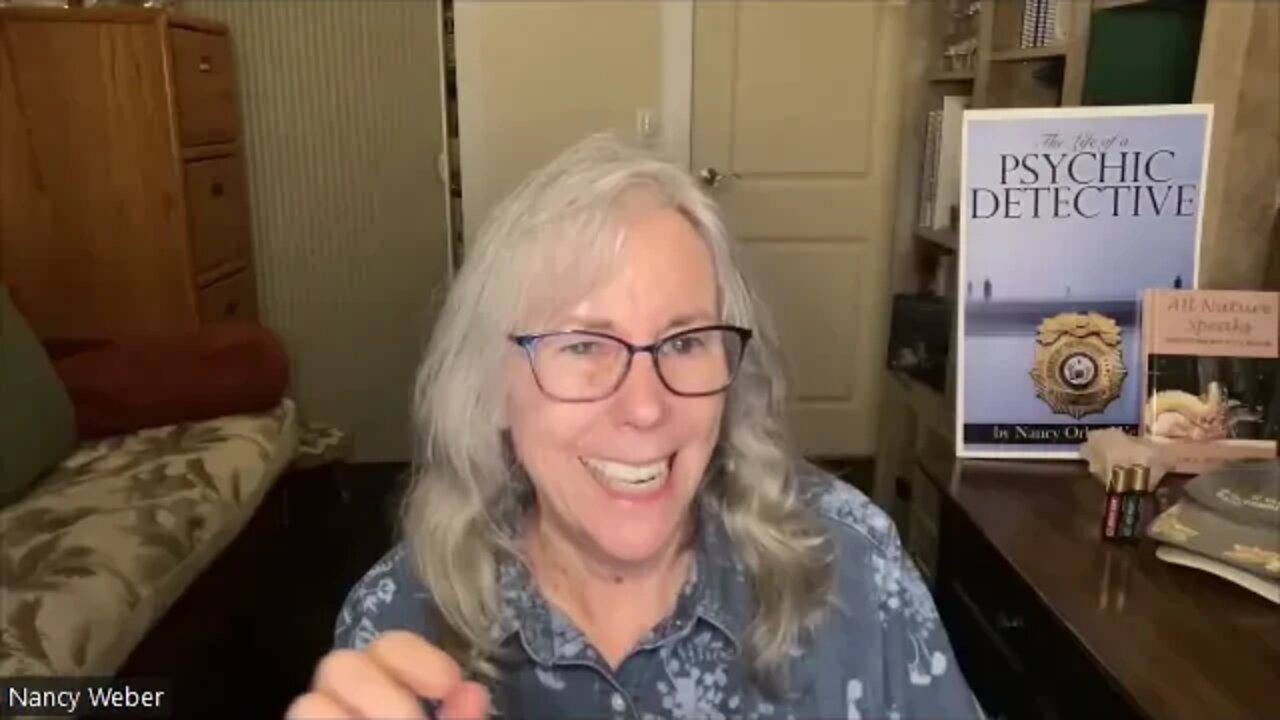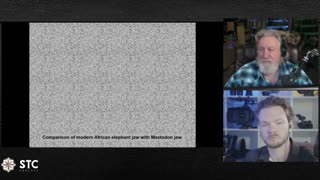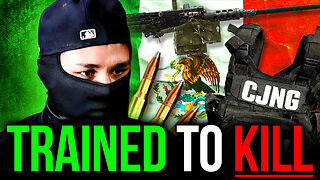Premium Only Content

The Life of A Psychic Detective Nancy Orlen Weber
Nancy Orlen Weber is the author of two books, The Life Of A Psychic Detective and All Nature Speaks, Conversations with Pets & Wildlife. She helps people discover their own innate connection with all of life through her writings, workshops, and private sessions.
Nancy resides with her husband in New Jersey and has five children and twelve grandchildren. She enjoys creating pen and ink drawings plus crocheting and donating winter scarves and hats, believing that the fabric of life is woven with love for all.
I've been asked often, "how did you get to do your work?" This is my answer.
The year was 1954, and I was ten years old, living in Brooklyn. On a beautiful spring day in May, my sixth-grade teacher asked me to stay after class and help him with a project. He lied. His hand went up my skirt as he grabbed me, and the other felt like a vise on my chest. The janitor thought it was odd that the door to the classroom was locked. As soon as he unlocked the door, the teacher dropped his hands, and I fled, running the half mile to my home, becoming temporarily mute. Weeks later, I told my best friend, who told her older sister, who told my parents. They did nothing, never talking about it. That experience planted a seed of the need to understand other people's behavior.
It was 1968 when my first husband, Gil, and I moved to Old San Juan, Puerto Rico. We would be there for two years while he did research at a nearby laboratory. While living at 410 Calle Nazagarray, which looked out at the bay and Fortaleza, the number one tourist picture of Puerto Rico, inside our home was a lot darker. Gil was angry at the change in the studies on the brain he thought he would be doing. Eight months into his frustration at work, his rage surfaced all at once. He stormed into the bedroom where I was folding laundry and threw his hands around my neck. I was five months pregnant. Without a word, he attempted to strangle me. I could feel myself passing out. I let myself go limp. He let go assuming he had killed me. Minutes later, I walked into the kitchen, where he was calmly drinking water, and turned the tables. No longer a shy yes to everything, woman. His shock that I was still alive was apparent.
I told him, “I suggest you don’t go to sleep. There may be a knife in your heart.” He stood, mouth open, eyes frozen on me.
With no one to help me, no family, no car, and no phone, I closed myself off to the outside world, attempting to keep my unborn child feeling safe. I gave birth months later, vowing to leave him as soon as possible.
In 1970, we moved back to the Bronx, New York, and I readied myself by looking for both work and someone I could trust to care for my daughter. One day I gave him the same notice he gave me in his attempt to destroy my life. “Leave. I do not love you nor forgive you.” He had just punched a hole in a wall. The force of my conviction was evident as he packed and left. We divorced, and I had sole custody of my daughter. Now disabled due to the violence, I knew I needed to look for nursing work that would fulfill my need to create a greater understanding of the effects of trauma.
That is also when I threw myself into Primal Therapy, Gestalt Therapy, Rolfing, and more. At each session, I felt more of myself and less of the frightened, shy little girl who was afraid of everyone.
A new experimental unit, the Acute Psychiatric Unit of Lincoln hospital in the south Bronx, was opening. At the time, that area had the highest crime rate in the country. The unit had blue walls and a large living room with many tables and chairs. To the left of the living room were twelve single-bed units, and to the right were two offices and a room for resident physicians in training in psychiatry. The teacher for the physicians in training offered me the top research post in psychiatry in New York State when he and the corporation, Health and Hospitals, knew I could get break through the patient's psychosis, sometimes in a few minutes or hours. One new client was admitted with the diagnosis of Catatonic. This had been ongoing for over 20 years. He had remained nonverbal all this time. Sitting opposite him in the central room, open to all who worked there with our chairs six feet apart, I saw his hands constantly moving. I felt it was his way of communicating. I responded as if my hands knew what to say, suspending all thought and imagining my hands would know how to build a friendship.
-
 1:23:40
1:23:40
Squaring The Circle, A Randall Carlson Podcast
20 hours ago#054 The Land Lost To The Flame - Squaring the Circle: A Randall Carlson Podcast
7.92K5 -
 34:39
34:39
Ohio State Football and Recruiting at Buckeye Huddle
22 hours agoOhio State Football: Who Will be the Surprise Stars for the Buckeyes in 2025?
14.9K3 -
 59:00
59:00
Greg Hunter's USAWatchdog.com
18 hours agoOmniwar - Weaponization of Everything – Catherine Austin Fitts
36.8K30 -
 16:30
16:30
Dr Disrespect
2 days agoI Take One Vacation… and the Industry COLLAPSES
91.3K20 -
 LIVE
LIVE
Lofi Girl
2 years agoSynthwave Radio 🌌 - beats to chill/game to
466 watching -
 22:50
22:50
GritsGG
18 hours agoDiscussing Warzone S4 Patch! Rank 1 Player's Thoughts!
19.1K -
 1:23:50
1:23:50
TruthStream with Joe and Scott
1 day agoCall to Podcasters! Dear Mr President Documentary with Mel Carmine and Carole Maureen Friesen live 7/5 #457
38.7K6 -
 2:51:33
2:51:33
The Pascal Show
21 hours ago $5.15 earned27 DEAD, CHILDREN MISSING! Desperate Search Along Guadalupe River After Texas Floods
23.5K4 -
 2:09:35
2:09:35
Badlands Media
23 hours agoDevolution Power Hour Ep. 369: Debt Theater, Fake Elections, and Elon’s New Party Psyop
96.3K67 -
 1:17:43
1:17:43
The Connect: With Johnny Mitchell
13 hours ago $17.75 earnedCartel Hitman Reveals How The Jalisco New Generation Cartel Turned Him Into A Professional Sicario
49.1K5